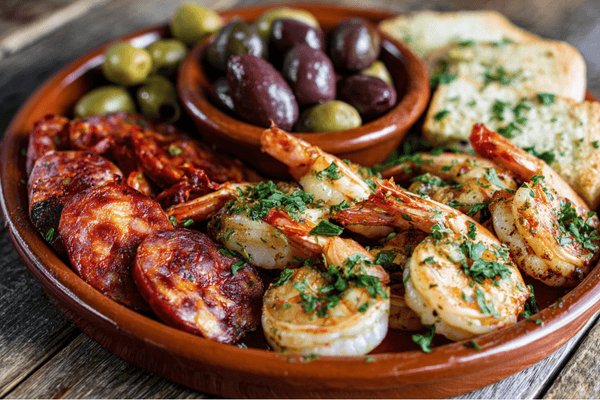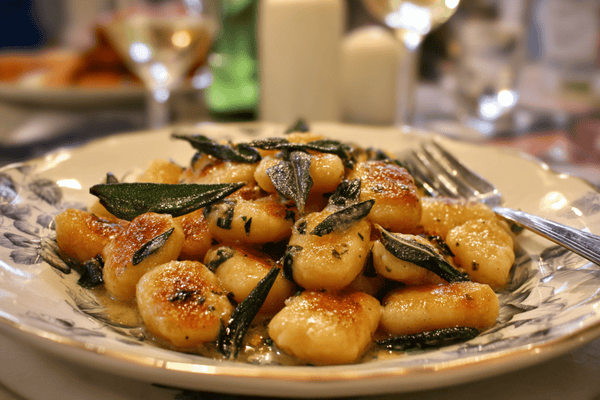
Wasabi is potentially one of the more well-known ingredients used in Japanese cuisine. Many people are familiar with the kick and warmth it brings to a dish and in the western world, it’s become incredibly popular when flavouring things like crisps and other savoury snacks.
Go to a Japanese sushi restaurant and you’ll probably have seen a dollop of wasabi paste next to your food. Many people leave it untouched but being one of the most famous Japanese condiments, it would be a crime not to try it. When attempting to stock a Japanese pantry, like Japanese-style soy sauce, panko bread crumbs, rice vinegar and miso paste, it is essential to include wasabi.
In this article: Stocking a Japanese Pantry - Wasabi, we’re going to take a look at everything you need to know about wasabi, to help you to take your Japanese cooking to the next level.
Table of contents
What Is Wasabi?
 True wasabi can cost a small fortune so if you’re trying to source fresh ingredients, then you need to be prepared to part with some serious cash. And when I say serious, that’s exactly what I mean; just a pound of true wasabi can cost up to $70USD, that’s around £53 at the current conversion rate! That's quite a lot for a single ingredient...
True wasabi can cost a small fortune so if you’re trying to source fresh ingredients, then you need to be prepared to part with some serious cash. And when I say serious, that’s exactly what I mean; just a pound of true wasabi can cost up to $70USD, that’s around £53 at the current conversion rate! That's quite a lot for a single ingredient...That said, it’s far cheaper to buy the premade wasabi paste which you can get at a lot of Asian supermarkets as well as many of the British chains.
Wasabi paste is usually made from horseradish which has a natural heat. If you’ve even eaten horseradish dressing, you’ll know what I’m talking about. The horseradish is then dyed green and mixed with other ingredients like mustard. But this isn’t how true wasabi is made. Instead, they use real wasabi plants but since these are so difficult to grow, the cost is much higher.
What Does Wasabi Taste Like?
Wasabi is a form of Japanese horseradish that is often used in Japanese cooking. That said, I know a lot of people that are put off the idea of eating wasabi because of how hot it is considered to be.When you use real wasabi, the kick isn’t quite what you would expect. Yes, there is heat to it but it’s more bright and clean and far less delicate than you might imagine. For example, when you add it to something like sushi, it won’t overpower the flavour of the fish but rather highlight it.
The best Japanese chefs know how to use wasabi in authentic Japanese recipes, perfectly balancing the amount of wasabi with the dish it is complimenting. This ensures the balance of flavours between the paste and the fish in Japanese food.
However, you have to keep in mind that if you are using the ‘fake’ wasabi pastes that are made from horseradish, these are far hotter and more intense which is where this condiment gets its bad rep from. If you’re not careful and add too much of these pastes to your dish, it will immediately overwhelm the flavour and you’ll be left with nothing but heat
How Do the Japanese Use Wasabi?
 As well as being one of the most well-known ingredients in Japanese cooking, wasabi is also one of the most versatile. This is why it should be among the first items you buy to stock your Japanese pantry. Wasabi can be used in both sweet and savory dishes. You’ll find that you use it over and over again but let’s take a look at some of the most popular ways to use wasabi.
As well as being one of the most well-known ingredients in Japanese cooking, wasabi is also one of the most versatile. This is why it should be among the first items you buy to stock your Japanese pantry. Wasabi can be used in both sweet and savory dishes. You’ll find that you use it over and over again but let’s take a look at some of the most popular ways to use wasabi.
● One of the most common uses for wasabi is with traditional Japanese sushi and sashimi. You can use it in different ways for these dishes but most chefs will either add a bit to dipping sauces such as Japanese soy sauce, or spread it right onto the fish, which is then placed onto the sushi rice and rolled in seaweed to form sushi rolls. The sushi rolls are then often rolled in white or black sesame seeds.
● Wasabi is also incredibly popular for use in a salad dressing. A great and simple Japanese dressing consists of wasabi and either rice vinegar or apple cider vinegar. This is great for adding to Asian salads and gives a clean but spicy kick.
● Since wasabi is considered to be a type of mustard, many people use it on a sandwich. It can be spread on by itself but many people prefer to mix it with something like mayo to get a balance. It goes very well with grilled cheese sandwiches if you want a little heat.
● Wasabi is often served with a type of Japanese noodle known as soba noodles and in this case, you will include the wasabi in a dipping sauce. The noodles can be served hot or cold and the wasabi provides the dish with a spicy kick.
● If you are making Japanese soups, stews and hot broth then wasabi is a great addition to these dishes. It makes for a more warm and hearty meal so is a great choice in the winter when you want to make comfort food. Try adding a touch to miso soup for a warming kick.
● Instead of using the traditional seafood or cocktail sauces you could substitute these with wasabi. Just add it to some tomato ketchup with a little soy sauce and you’ll have a delicious sauce that’s ideal to serve with prawns, shrimp and other seafood.
Final Thoughts
Wasabi is a traditional condiment often used in authentic Japanese cooking that adds another dimension of flavour and a warm kick to Japanese foods as well as many western dishes.Like green tea and salty soy sauce, it is one of the Japanese pantry staples as it is included in so many Japanese dishes and is a firm favourite in Japanese food culture.


